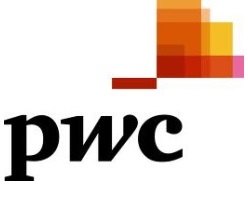 PwC’s Health Research Institute (HRI) regularly publishes research and analysis on issues and trends affecting healthcare. In its latest report, Healthcare’s Alternative Payment Landscape, HRI addresses how the industry is fairing in transforming from fee-for-service to value-based medicine. With a health system built on a fee-for-service structure that rewards quantity, the research shows providers are grappling on when and how to move to alternative payment models that rewards quality and outcomes.
PwC’s Health Research Institute (HRI) regularly publishes research and analysis on issues and trends affecting healthcare. In its latest report, Healthcare’s Alternative Payment Landscape, HRI addresses how the industry is fairing in transforming from fee-for-service to value-based medicine. With a health system built on a fee-for-service structure that rewards quantity, the research shows providers are grappling on when and how to move to alternative payment models that rewards quality and outcomes.
In the report, HRI researchers write that at the start of 2015, HHS Secretary Sylvia Burwell set two targets for Medicare: 50% of fee-for-service payments should be in value-based medicine reimbursement models by 2018 with 90% of payments alinged to quality improvement efforts. Though HHS hasn’t provided full details on how it will measure program towards value-based medicine, alternative models are in place that reward physicians for higher quality care including ACOs, single “bundles” payments, patient centered medical homes, and comprehensive primary care (CPC) initiatives. And through the legislative process, Congress has created a path for physicians to get paid under new reimbursement models that reward higher quality care. (Read MU, PQRS and VBM Create New Payment Model MIPS).
Still, the HRI researchers found enthusiasm lacking. The report notes that “while healthcare executives publicly support
the drive away from fee-for-service,many privately fret about losing the predictable stream of revenue.” Understandable since, according the a survey conducted by HRI, 53% of physician revenue is based on fee-for-service payments, with alternative models and incentive-based programs accounting for a much smaller percentage.
The report provides a number of infographics including:
- CMS Payment Changes 2015–2018: Medicare’s commitment towards quality-based payments grows
- Regional clusters: Accountable Care Organizations and bundled payment initiatives find common ground
Alternative models track closely with each other - Market archetypes: What’s happening at the community-level impacts how and when an healthcare organization moves into an alternative payment model
- Health System Readiness:Regional factors play a role, but a health system’s own goals should guide its decision
The last infographic identifies where a particular health system is in the move to value-based model continuum and offers suggestions on how to move the the next level:
Walker: A lack of revenue and high operational costs means this health system could stumble out of the starting blocks.
Jogger: Thrives under traditional payments such as fee-for-service and wants to delay the move to alternatives for as long as possible. Typically
this system is the dominant player in a community.
Runner: Committed to value-based care, with several demonstrations underway. Needs to take the lessons from those pilot projects and tailor them according to the health system’s size and reach.
Sprinter: Looking to increase revenue under a number of alternative payment models. A sprinter wants to differentiate itself from other health systems in the region.
Download and read HRI’s closer look at Healthcare’s alternative payment landscape.
